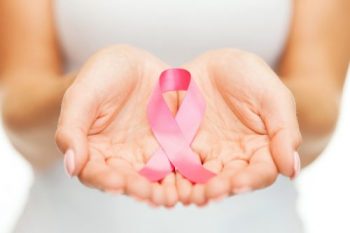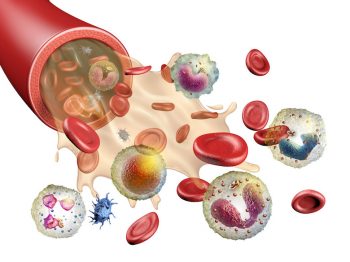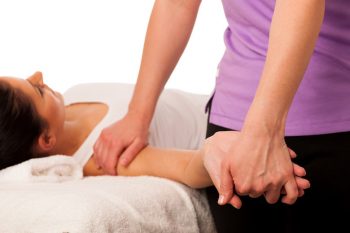What is Cancer Massage?

Oncology (cancer) massage is a highly specialized type of massage therapy that utilizes techniques to safely work around the complications of cancer and cancer treatment.
It is designed for people who are currently undergoing cancer treatment or who have ever received radiation and/or chemotherapy or surgery. It can also help reduce swelling caused by these treatments (lymphedema) by using Manual Lymphatic Drainage (“lymphatic massage”).
It is important to note that if you have or have had cancer, you need to see a massage therapist with special qualifications in Oncology Massage. These protocols are not taught in massage school and require extensive additional training. If swelling is involved after cancer therapy, it is absolutely critical that you see a Certified Lymphedema Therapist as opposed to a run-of-the-mill massage therapist offering “lymphatic massage.” Lymphedema therapists may hold a massage license, but it is a completely separate discipline.
Most Certified Lymphedema Therapists (CLTs) are Physical or Occupational Therapists. These CLTs usually work in hospitals and clinics. When insurance benefits (about a 6 week lifetime benefit) is used up, CLTs who are massage therapists are generally where people turn for long-term treatment for maintenance of lymphedema, a lifelong condition.

Cancer and its many treatments cause the body to be more fragile in certain ways and standard massage techniques are not always appropriate.
Additionally, the side effects of medications, surgery, radiation, and chemotherapy require special adaptations to keep the client safe.
What are Appropriate Techniques After Cancer Therapy?

Cancer and Standard Massage
Standard massage techniques may be too much pressure, involve too much stretching, or may move too much fluid in the body affecting medication or chemotherapy levels.
Oncology Massage is not a specific technique in and of itself. Instead, it is the therapist’s knowledge of massage techniques and of cancer and cancer treatment that are combined in a unique way for each individual depending on their needs. For example, a person who needs specialized breast therapy massage after a mastectomy and possible reconstruction needs a therapist with very different advanced credentials than what a person gets in standard massage school.
The same person could receive different variety of oncology massage based on how far along they are in their cancer treatment. What is appropriate can vary over time based on what is currently going on in that patient’s treatment or recovery.
For example, if a person has just had surgery or has undergone radiation, the areas of the body involved would be avoided. Lymphatic massage, however, would be a great idea to help the body to remove wastes from damaged tissue and bring nutrients to those sites.
As a LANA Certified Lymphedema Therapist and Licensed Massage Therapist with specialized oncology training, Shannon is well-equipped to ensure that you get an effective session, whether your needs revolve around lymphedema, post-op swelling, axillary cording, scars limiting range of motion, radiation fibrosis, or other related conditions. Shannon works with these conditions every day, and can ensure you get relief while remaining comfortable and relaxed.
Chemo After Effects
Later on, this same person may undergo chemo. The surgical site is now closed and the radiation area is no longer inflamed. At this point, scar tissue remodeling may be done on the surgical site, the radiation site will be only touched with gentle care, and lymphatic massage will be avoided because it will flush the chemo from the system too quickly. (Physicians will often give recommendations of how long after chemo one should wait prior to receiving lymphatic massage. This often depends on the type of chemo administered.)

How is a Client Assessed
for Safety in Oncology Massage?

Assessment to determine the appropriate Oncology Massage techniques is paramount for safety. Most massage therapists do not have training advanced enough to make these types of evaluations or treat for the following conditions. For this reason, you should check your massage therapist’s credentials to ensure that they are certified in working with people who have or have had cancer.
Assessment topics include the following items:
• Lymph Node Involvement
• Vital Organ Involvement
• Tissue Integrity / Presence of Scar Tissue
• Medications
• Cancer Treatment History
• Presence or Risk of Lymphedema
• Alterations in Sensation / Neuropathy
• Tumor Site or Evidence of Metastasis
• Blood Cell Counts
• Blood clots or blood clot risk
• Medical Devices (Ports, etc.)
• Pain
• Evidence of Axillary Web Syndrome
• Evidence of Mondor’s Cords
Lymphedema Treatment
Qualified Certified Lymphedema Therapists such as Shannon Goins-Blair at Pain & Swelling Solutions can help you with post-cancer treatment swelling. Lymphedema is a condition that must be managed daily with compression garments and generally weekly or bi-weekly with Manual Lymphatic Drainage (“lymphatic massage”). These maintenance techniques help keep the swelling at bay and keep lymphedema from progressing to a worse state. If you suspect you have lymphedema or need lymphedema therapy, make your appointment today to get on the right track.

Getting oncology massage during and after cancer treatment can greatly
improve how you feel and, boost your immune function.





